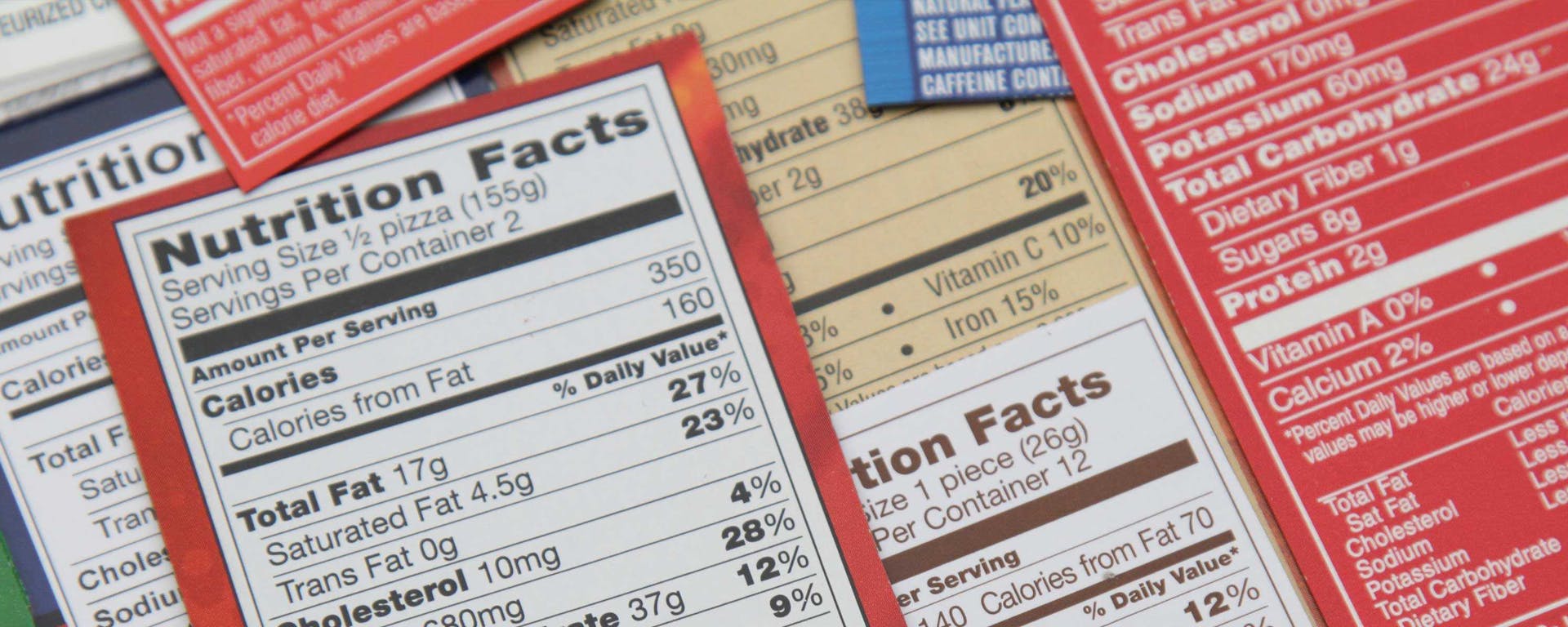The Fine Print

Decoding What’s Really in Your Go-To Foods
Have you been taking a closer look at the fine print on your groceries? The FDA recently revised their guidelines for nutrition labels, requiring them to include Added Sugars, and shoppers are taking notice. Added Sugars are-- just as they sound-- any sugars added as ingredients, not including naturally occurring sugars in fruits, vegetables, and milk. The FDA recommends added sugars make up less than 10% of your total calories for the day. So if you consume 2,000 calories per day, less than 200 should come from added sugar or about 50g.
All this talk might have you wondering—what else should I be noticing on that little black and white rectangle? Well, we’re glad you asked! There are all sorts of important nuggets of info to help you make informed decisions about what you’re putting into your body. Here are a few key stats to check out before you dig in.
SERVING SIZE This should always be your first consideration, because the other numbers don’t matter—until you know your portion size. For instance, if you plan on eating a whole package of crackers, and there are two servings per pack, you need to double all the other numbers in the Nutrition Facts. Put those grade school math skills to the test!
SUGAR This is the section we hit on above—keeping added sugars low is important. Premier Protein® Shakes have 1 gram of sugar, making them a great option, and also Keto-friendly.
FAT It’s important to look for this, but Fat is not the big bad guy it was previously made out to be. The key is to look at what kind of fat you’re eating, and there are several. The main ones to look out for are Trans Fat and Saturated Fat—you want those numbers to be low. Trans Fats should be avoided; they can spike cholesterol levels and increase the risk of heart disease. On the flip side, your body needs fat for energy, so the right kinds of fats--those are unsaturated fats-- are a good thing!
PROTEIN While we’re on the topic of energy and cell growth, we have arrived at those important building blocks of muscle, tissue, and all kinds of cells: protein. You probably know by now how beneficial protein is for your body. Not only does this macronutrient help repair and strengthen cells, it also helps keep us healthy and able to make hormones and antibodies. Protein takes longer for the body to break down than most carbohydrates, so high-protein foods leave you feeling full longer. Case in point: your favorite flavor of Premier Protein® Shake. With 30 grams of protein, our shakes give you 60% of your daily recommended protein in a single serving.
CARBS AND FIBER A good rule of thumb: you shouldn’t have carbs without some fiber tagging along. Fiber slows down digestion and that’s key to satisfying hunger.
VITAMINS AND MINERALS Once you get to the part of the nutrition label with all the vitamins and minerals, everything can start to look like a blur, but stick with it! This is the good stuff. Look for a high % DV for these—that’s the percentage of the daily value recommended by the FDA. Vitamins like C and E are an important part of a healthy diet and lifestyle. They are antioxidants, which means they help maintain cell integrity. Our shakes contain 25% DV of both Vitamins C and E—that means your favorite shakes contain nutrients for healthy immune system support. Calcium is super important in helping support, build and maintain strong bones, and also helps support healthy heart function, muscles, and nervous system.
Is that fine print looking a little clearer now? If you want to learn more, the FDA breaks food labels down in more detail on its website.
When you flip over a product to check its label, what’s the main thing you’re looking for? Let us know on Instagram @PremierProtein.








